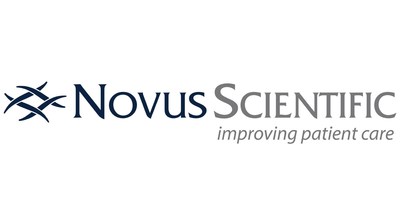 |
UPPSALA, Sweden, Jan. 16, 2019 /PRNewswire/ — The synthetic and fully resorbable TIGR®Matrix surgical mesh (Novus Scientific AB, Uppsala − Sweden) might be an interesting candidate for the prevention of complications frequently observed with permanent mesh placement, according to Professor Johan Lange of the Erasmus University in Rotterdam − the Netherlands.
A common complication occurring in about 20% of patients undergoing laparotomy is incisional hernia – the protruding of abdominal organs due to surgery-related tissue weakness.
“Recent research by the R.E.P.A.I.R. study group of the Erasmus University Medical Center has shown that surgical matrices can prevent incisional hernia after laparotomy, but it is well known that permanent meshes can cause severe complications, including seromas, infections, and persistent pain.[1] There is an unmet need for an effective and safer alternative to permanent meshes for several indications in abdominal wall hernia surgery,” explained Professor Lange.
A smaller trial in sixteen patients undergoing laparotomy and at risk of incisional hernia reported promising results using onlay TIGR®Matrix placement.[2] The study had a low complication-rate of 12.5% with an exciting efficacy: no cases of incisional hernia occurred.
“Researchers of the R.E.P.A.I.R.-group at the Erasmus University Medical Center are now initiating a large, multicentre, clinical study in 70 patients undergoing midline surgery to investigate the short- and long-term safety and efficacy of onlay TIGR®Matrix surgical mesh,” said lead-investigator of the study Professor Lange. “This study will show if the earlier, positive results with the fully resorbable synthetic mesh can be confirmed.”
Professor Johan Lange has published over 300 articles in peer-reviewed journals, including a recent study comparing sublay and onlay surgical mesh for the prevention of incisional hernia.[1]
About the TIGR®Matrix
TIGR®Matrix is the first long-term resorbable, 100% synthetic, surgical mesh. Its unique technology consisting of dual-stage degradation and full resorption, paired with ease of use, is a significant step forward in surgical mesh technology.
The fast-degrading part improves the mesh’s flexibility and stretchability, provides extra strength during the immediate healing phase, and gradually absorbs during the first four months. The slow-degrading part of the mesh provides optimal strength for up to nine months with complete resorption in approximately three years. TIGR®Matrix uses 100% synthetic polymers that are well documented, clinically proven, and commonly used in medical devices since the 1970s.
About the Novus Scientific
Novus Scientific AB (www.novusscientific.com) develops, manufactures and markets resorbable implants that help the body’s own healing. The headquarter, research and production facilities are located in Uppsala, Sweden.
Source
1 Jairam AP, et al. Lancet. 2017 Aug 5;390(10094): DOI:10.1016/S0140-6736(17)31332-6.
2 Söderbäck H, et al. Front Surg. 2016;3(28): DOI:10.3389/fsurg.2016.00028.
![]() View original content to download multimedia:http://www.prnewswire.com/news-releases/erasmus-university-mc-investigating-a-new-surgical-matrix-to-reduce-post-operative-complications-300779424.html
View original content to download multimedia:http://www.prnewswire.com/news-releases/erasmus-university-mc-investigating-a-new-surgical-matrix-to-reduce-post-operative-complications-300779424.html


